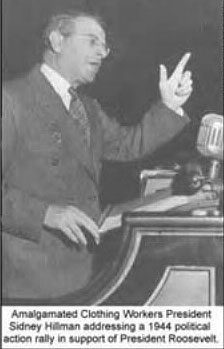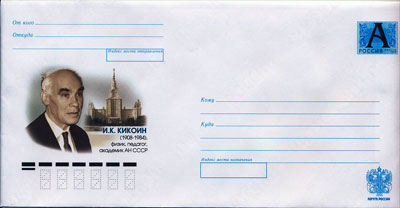Noteworthy Zhager Natives and Descendants
As noted, for a town its size, Zhager produced an uncommonly large number of famous scholars, writers, and rabbis: the wise men of Zhager. This was especially true with respect to the Jewish Enlightenment, or Haskalah, where such a little shetl contributed such a disproportionate number of maskilim (enlightenment teachers). And in this, Zhager was unique in all of Lithuania. Perhaps this was because Žagarė was located on the border with Courland (now part of Latvia), which provided a path for the influence of German culture and made the spread of the Haskalah easier in Zhager.
One of the most famous of the wise men was Reb Chaim. Jacob Dinezon (himself from Zhager and one of the builders of Yiddish literature) wrote of Reb Chaim: "a giant both in Torah learning and in wisdom. The first and maybe the greatest of all the Zhager wise men". Every three years Reb Chaim completed his reading of the Talmud. He knew ten languages and was well versed in philosophy. Without his help, Leon Mandelstamm (see below) would not have been able to translate sections of the Rambam (Maimonides) into German.
The Mandelstamm family played a large part in the Haskalah in Zhager as well as in Lithuania/Russia as a whole, in particular Josef and his three sons Benjamin, Leon, and Ezekiel. The most famous is Leon (Aryeh Leib) Mandelstamm. He was the first Russian Jew to complete studies in a Russian University (Moscow). In the 1840s he was assigned by the Russian government to distribute textbooks, in order to help reform Jewish education. His reforms continued in 1864 when he became the supervisor of Jewish schools in Russia. In his illustrious career he published a reader of excerpts from the Rambam, a Russian language textbook, a Hebrew grammar, a translation of the Hebrew bible (Tanakh) in Russian that was published by the Russian government, a Tanakh with Mendelssohn's commentaries, and a Russian-Hebrew/Hebrew-Russian dictionary. Unfortunately, he ended his days in poverty in St. Petersburg. After his death, his library was sold to the New York Public Library and became the nucleus of its renowned Jewish Division.
Benjamin Mandelstamm, the eldest of Leon's brothers, was born at the end of the 18th century in Zhager. He was a writer and a leading reformist. He was involved in a program of bringing training in trades and the Haskalah to the Jews, albeit with strong Russian assimilationist tendencies. In his "Paris" (Warsaw) he depicted the luminous life in the big city. He wrote a book about the Jews of Žagarė, and his travels to Moscow.
Emanuel (Max) Mandelstamm, Ezekiel's son, was born in Žagarė and later became a famous ophthalmologist. He was involved with Zionism's first epoch; at the Kattowtiz Conference (see above) he was chosen to be on the Central Committee of Hovevei Zion.
Following are links to articles on Mandelstam family descendents provided by Vitaly Charny:
http://en.wikipedia.org/wiki/Leonid_Mandelstam
http://www.jewishgen.org/Belarus/newsletter/Mandelshtam.htm
http://en.wikipedia.org/wiki/Osip_Mandelstam
http://www.litvaksig.org/litvaksig-online-journal/osip-emilyevich-mandelshtam-russian-poet-1889-1938?task=article
Kalonimus-Zeev Visotzky was a philanthropist
and public figure, born in 1824 in Žagarė. He was among the
biggest philanthropists in all of Russia. In 1858, Visotzky
settled in Moscow, where he thrived in business. His "Visotzky
Tea" becoame a by-word. His first large contribution was used
to create a cultural center in Moscow. He made contributions
to many yeshivas in Russia and in Jerusalem — and also to
hospitals, old-age homes, and other social service
institutions. He gave large sums to establish a Technion in
Haifa and for a Hebrew library in Jaffa. He, as with Emmanuel
Mandelstaam, participated in the Kattowitz Conference and
joined the central committee of Hovevi Zion. Visotzky's name
became synonymous with great wealth and business success and
appears in much Yiddish literature. He died in Moscow in 1904.
In his last will and testament to his children he suggests
that they should not concern themselves only with money, but
also for the welfare of the Jewish community.
Here is a link to a webpage devoted to Zhager native Jacob Dinezon who is described
as the "beloved uncle of modern Yiddish literature": http://jacobdinezon.com/biography/

Some Žagarė natives made their mark far from Zhager. Sidney
Hillman was an important labor leader in the United
States. President Franklin D. Roosevelt brought him into his
administration to handle labor issues. Hillman was a short,
spare man who peered through bifocals and spoke with a marked
Lithuanian accent. He had come to America at twenty, landing
in Chicago. Leading a revolt among tailors he created the
Amalgamated Clothing Workers of America and then become John
Lewis's right-hand man in building the CIO (Congress of
Industrial Organizations). His original name was Simcha and
two interesting books detail his early life in Žagarė, as a
yeshiva student in Kovno, and his political activities before
being forced to leave Lithuania: Mathew Josephson, Sidney
Hillman: Statesman of American Labor, 1952; Steven Fraser,
Labor Will Rule: Sidney Hillman and the Rise of American
Labor, 1991. Also see Doris Kearns Goodwin, No Ordinary Time;
Franklin and Eleanor Roosevelt: the Home Front in World War
II,1994.
And here is a link to an article on Zagare-born physicist Isaak Kikoin:
http://en.wikipedia.org/wiki/Isaak_Kikoin
In 2008 Russia issued this commemorative envelope in honor of Kikoin’s 100th birth anniversary:

Louis Buckhalter was a
Lithuanian Jewish footballer and cricketer who represented his
adopted country Ireland in both sports according to this
Facebook page:
http://www.facebook.com/pages/Louis-Buckhalter/109905962366231

He was a teacher and educator, and was the director of the Board of Jewish Education in Akron, Ohio, Syracuse, New York and Milwaukee, Wisconsin, among others. He published articles and works on Jewish education and history, most notably "The Jewish Community in Russia 1772-1844" published in 1943 by Columbia University Press; the book contains several references to Žagarė since that was Levitats' home town; he notes in the preface that he used documents that were sent to him by his brothers who remained in Lithuania.
A recent Zhager luminary was the last great pre-war Yiddish scholar resident in post-Soviet Vilnius, Chatzkel Lemchen (1904-2001). A native of the shtetl Popilan (Lithuanian: Papile) in northern Lithuania, Lemchen spent much of his youth in nearby Žagarė. To Lithuanians, who know him as Chackelis Lemchenas, he was a great Lithuanian lexicographer and the compiler of a series of authoritative Lithuanian-Russian dictionaries. But from his youth in interwar independent Lithuania, Lemchen maintained an avid interest in Yiddish philology and literature. Before the war, he translated a number of Yiddish classics into Lithuanian, and during the Soviet period, he managed to publish a study of the impact of Lithuanian on Yiddish in western Lithuania. Lemchen was beloved as an exceptionally modest, gentle, and kind personality, who embodied the love of learning for its own sake, said to be one of the hallmarks of the traditional Litvak. During Lemchen's final years, his nephew Rod Freedman, a film director in Australia, discovered him and made the extraordinary documentary Uncle Chatzkel. Lemchen established a legacy as a rare scholar and human being; in Lithuania, and far beyond, he is fondly remembered by many admirers and friends.
In addition, there are many notable descendents of Zhager
parents and grandparents, including two Nobel Prize winners.
One Nobel Prize winner is Professor Baruch Blumberg,
born in 1925 in New York City, whose father was born in
Žagarė. Professor Blumberg is an American research physician
whose discovery of an antigen that provokes antibody response
against Hepatitis B led to the development, by other
researchers, of a successful vaccine against the disease. He
shared the Nobel Prize in Physiology or Medicine in 1976 for
his work on the origins and spread of infectious viral
diseases. The other is South African novelist Nadine
Gordimer whose father was also born in Žagarė.
Gordimer, born in 1923, won the prize for Literature in 1991
when it was stated that "her magnificent epic writing has been
of very great benefit to humanity."
Barry Posner notes the recent passing of his cousin Dr.
Reginald Morris; here is
the 2012 obituary from the Jerusalem Post.
Introduction
History
- History by compiler
- - Historic Events
- - Emigration & Extermination
- - Noteworthy Natives & Descendants
- - References
- Others' Histories
- Rose Zwi's story
- Historic photographs

